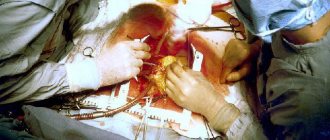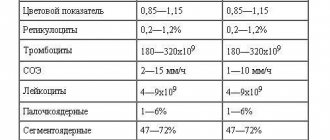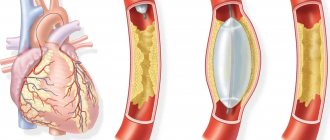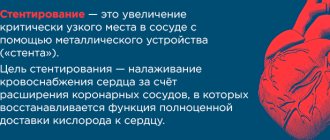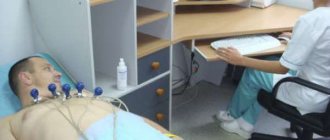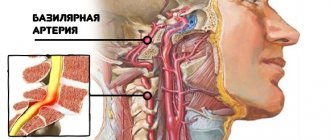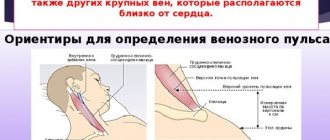Functions of the heart - why do we need a heart?
Our blood provides the entire body with oxygen and nutrients. In addition, it also has a cleansing function, helping in the removal of metabolic waste.
The function of the heart is to pump blood through blood vessels.
How much blood does the human heart pump?
The human heart pumps from 7,000 to 10,000 liters of blood in one day. This amounts to approximately 3 million liters per year. That works out to 200 million liters over a lifetime!
The amount of blood pumped per minute depends on the current physical and emotional load - the greater the load, the more blood the body requires. So the heart can conduct from 5 to 30 liters through itself in one minute.
The circulatory system consists of about 65 thousand vessels, their total length is about 100 thousand kilometers! Yes, we didn't make a mistake.
When the heart rests
Many are accustomed to thinking that our heart works without rest throughout our lives.
However, this is not the case. If we compare the period of time required for one heart beat with the time interval between beats, the first interesting fact becomes clear. The fact is that in order to push one portion of blood into the blood vessels of our body, the heart needs approximately 0.43 seconds. This time is the sum of the time of blood movement within the organ itself (0.1 second) and the time of expulsion of blood into the aorta (0.33 seconds). In this short period of time, the heart is in a state of tension, it works. After one contraction, a period of rest begins, which lasts approximately 0.57 seconds. At this time, the heart muscle is completely relaxed. The heart of a healthy person beats at a rate of approximately 70-75 beats per minute or 100,000 times per day. If you add up all the intervals in one minute when the heart is in a state of contraction, you get 25.8 seconds. The heart muscle remains in a relaxed state for 34.2 seconds. When adding up the time the heart works and rests during the day, it turns out that it works only 10 hours 19 minutes and 12 seconds, the rest of the time (13 hours 40 minutes and 48 seconds) it rests.
These simple calculations reveal the secret of the unique performance of the human living motor: nature allowed the heart to rest before it got tired. It simply cannot be otherwise. After all, a long rest of the heart, necessary to quench fatigue, would destroy a person.
Circulatory system
Circulatory system (animation)
The human cardiovascular system is formed by two circles of blood circulation. With each heartbeat, blood moves in both circles at once.
Pulmonary circulation
- Deoxygenated blood from the superior and inferior vena cava enters the right atrium and then into the right ventricle.
- From the right ventricle, blood is pushed into the pulmonary trunk. The pulmonary arteries carry blood directly to the lungs (to the pulmonary capillaries), where it receives oxygen and releases carbon dioxide.
- Having received enough oxygen, the blood returns to the left atrium of the heart through the pulmonary veins.
Systemic circulation
- From the left atrium, blood moves into the left ventricle, from where it is subsequently pumped through the aorta into the systemic circulation.
- After going through a difficult path, the blood again arrives through the vena cava to the right atrium of the heart.
Normally, the amount of blood pushed out of the ventricles of the heart is the same with each contraction. Thus, an equal volume of blood simultaneously enters the greater and lesser circulation.
What is the difference between veins and arteries?
- Veins are designed to transport blood to the heart, and the job of arteries is to supply blood in the opposite direction.
- In veins, blood pressure is lower than in arteries. Accordingly, the walls of arteries are more elastic and dense.
- Arteries saturate “fresh” tissue, and veins take away “waste” blood.
- In the case of vascular damage, arterial or venous bleeding can be distinguished by its intensity and the color of the blood. Arterial - strong, pulsating, beating like a “fountain”, the color of the blood is bright. Venous - bleeding of constant intensity (continuous flow), the color of the blood is dark.
How much blood does a person's heart pump in one beat?
The heart is a unique biological pump that can “increase power” depending on the body’s need for blood supply. How much blood does the heart pump per minute? In normal mode, the human heart makes 60-65 beats per minute and in a calm state pumps up to 6 liters of blood during this time. However, even during minor physical exertion, the heart rate increases to 70-75 beats, and during intense exercise it can make up to 200 contractions per minute. Accordingly, the volume of pumped blood increases.
During heavy physical work, the heart pumps 6 times more blood per minute than usual (up to 40 liters!). Observations of athletes have shown that the heart of, for example, a marathon runner lying down for 2.5 hours makes 9,000 beats and pumps 900 liters, and when he runs his 42-kilometer distance during the same time, his heart pumps 6,000 liters in 30,000 contractions !
If we resort to the help of an image, then in two and a half hours the heart of a lying person pumps blood in the volume of a meter-diameter barrel to a height of 1.2 meters, and in the case of a marathon runner, during the course of the distance, it pumps blood to the height of the third floor of a standard apartment building.
Another clear analogy. In 10 seconds, 1 liter of blood flows through a person’s arteries at rest, and in the same ten seconds, a sprinter’s heart pumps 6.6 liters of blood.
By the way, when the heart works under load, it increases significantly in size. If a person in a calm state has a fist-sized heart (about 750 cubic centimeters), then, for example, in cyclists on the road the heart increases to a volume of 1250 cubic centimeters. centimeters, that is, it becomes twice as large.
1. The average adult's heart beats approximately 72 times per minute, 100,000 times per day, 3,600,000 times per year, and 2.5 billion times during a lifetime.
2. A kitchen faucet must be turned on at full pressure for 45 years to dispense an amount of water equal to the amount of blood pumped by the heart in an average human life.
3. The volume of blood pumped by the heart can vary widely, from 5 to 30 liters per minute.
4. Every day, the heart produces enough energy to drive a car 32 km. In a lifetime, this is equivalent to going to the moon and back.
5. Because the heart produces its own electrical impulses, it can continue to beat even when separated from the body as long as it receives enough oxygen.
6. The fetal heart rate (pulse) is approximately twice that of an adult, approximately 140 beats per minute. By the time a fetus is 12 weeks old, its heart is already pumping 28 liters of blood per day.
7. The heart supplies blood to almost all 75 trillion cells of the body. There is no blood supply only in the corneas of the eyes.
8. During an average life, the heart pumps about 5.7 million liters of blood.
9. 5% of the blood supply is in the heart, 15–20% goes to the brain and central nervous system, and 22% goes to the kidneys.
10. The heart beats when the heart valves slam shut.
11. The heart starts beating four weeks after conception and does not stop until death.
12. A newborn baby has approximately one cup of blood in circulation.
13. The ancient Egyptians believed that the heart and other major organs could be moved within the body at will.
14. Plato believed that thinking originates in the brain, and passions in the heart. This refers to the organs themselves.
15. Cocaine affects the electrical activity of the heart and causes artery spasms, which can lead to heart attack or stroke even in healthy people.
16. A woman's heart usually beats faster than a man's. Male - approximately 70 beats per minute, female - 78.
17. When the body is at rest, it takes only 6 seconds for blood to travel from the heart to the lungs and back, only 8 seconds to travel to the brain and back, and 16 seconds to reach the fingers and return.
18. French physician Rene Laennec (1781–1826) invented the stethoscope when he felt that it was uncomfortable to press the ear to the chest of patients with too large a bust size.
19. The physician Erasistratus of Chios (304–250 BC) was the first to propose that the heart functions as a pump.
20. Galen argued that the heart itself produces blood. However, William Harvey's discovery of the circulatory system in 1616 showed that there is a limited amount of blood in the body and it moves in a circle.
You will learn from this article how many liters the heart pumps in a minute, in an hour, in a day, in a year and in a lifetime.
The human heart is a truly amazing organ that has limitless endurance and boundless hard work. Its knock accompanies us throughout our lives. Sometimes we don’t even realize that pumping blood throughout the body is the most important vital function of this organ. Therefore, it is worth paying more attention to this process.
Having contracted just once, the heart throws 60-70 ml of blood into the aorta. By counting the number of contractions, you can determine how much blood a given organ pumps in 1 minute - from 5 liters to red liquid.
- In one minute, the heart pumps from 5 to 30 liters of blood.
In an hour of work, the heart distills about 400-600 liters of blood. The volume depends on the frequency of contractions, on age, on the state of the cardiovascular system.
In an adult, the heart pumps an average of 10,000 liters of blood per day.
During a year of continuous operation, our organ pumps 2,500,000 liters of blood. Just imagine!
There is no exact information on this matter. But scientists have calculated that over 70 years of life, the heart circulates over 175 million liters of blood throughout the body! So that you understand how huge this number is, imagine that this would be enough to fill more than 4 thousand railway tanks with liquid! For example, a kitchen faucet will release a similar volume of water only after 45 years, and then only if it is turned on at full pressure.
These indicators are calculated under the condition of a calm heartbeat. In accelerated mode, this number is greater. Another important point: the hard-working organ throws out blood at a speed of 1.6 km/h, and the driving distance is as much as 90 thousand km.
We hope that from this article you learned how much blood the heart pumps over a certain period of time.
Anatomical structure of the heart
The weight of a human heart is only about 300 grams (on average 250 grams for women and 330 grams for men). Despite its relatively low weight, it is undoubtedly the main muscle in the human body and the basis of its life activity. The size of the heart is indeed approximately equal to a human fist. Athletes' hearts can be one and a half times larger than those of the average person.
Anatomical structure
The heart is located in the middle of the chest at the level of 5-8 vertebrae.
Normally, the lower part of the heart is located mostly in the left side of the chest. There is a variant of congenital pathology in which all organs are mirrored. It is called transposition of internal organs. The lung, next to which the heart is located (normally the left one), is smaller in size relative to the other half.
The back surface of the heart is located near the spinal column, and the front surface is reliably protected by the sternum and ribs.
The human heart consists of four independent cavities (chambers) divided by partitions:
- two upper ones - the left and right atria;
- and two lower ones - the left and right ventricles.
The right side of the heart includes the right atrium and ventricle. The left half of the heart is represented, respectively, by the left ventricle and atrium.
The inferior and superior vena cava enter the right atrium, and the pulmonary veins enter the left atrium. The pulmonary arteries (also called the pulmonary trunk) emerge from the right ventricle. The ascending aorta rises from the left ventricle.
Structure of the heart wall
Structure of the heart wall
The heart has protection from overstretching and other organs, which is called the pericardium or pericardial sac (a kind of membrane in which the organ is enclosed). It has two layers: an outer dense, strong connective tissue called the fibrous membrane of the pericardium and an inner layer (serous pericardium).
This is followed by a thick muscle layer - the myocardium and endocardium (the thin connective tissue inner lining of the heart).
Thus, the heart itself consists of three layers: epicardium, myocardium, endocardium. It is the contraction of the myocardium that pumps blood through the vessels of the body.
The walls of the left ventricle are approximately three times larger than the walls of the right! This fact is explained by the fact that the function of the left ventricle is to push blood into the systemic circulation, where the resistance and pressure are much higher than in the pulmonary circulation.
Heart valves
The device of heart valves
Special heart valves allow you to constantly maintain blood flow in the correct (unidirectional) direction. The valves alternately open and close, either letting blood through or blocking its path. Interestingly, all four valves are located along the same plane.
Between the right atrium and the right ventricle is the tricuspid valve. It contains three special leaflet plates that, during contraction of the right ventricle, can provide protection from the reverse flow (regurgitation) of blood into the atrium.
The mitral valve works in a similar way, only it is located on the left side of the heart and is bicuspid in its structure.
The aortic valve prevents blood from flowing back from the aorta into the left ventricle. Interestingly, when the left ventricle contracts, the aortic valve opens as a result of blood pressure on it, so it moves into the aorta. After which, during diastole (the period of relaxation of the heart), the reverse flow of blood from the artery promotes the closure of the valves.
Normally, the aortic valve has three leaflets. The most common congenital heart abnormality is bicuspid aortic valve. This pathology occurs in 2% of the human population.
The pulmonary (pulmonary) valve at the moment of contraction of the right ventricle allows blood to flow into the pulmonary trunk, and during diastole it does not allow it to flow in the opposite direction. It also consists of three doors.
Cardiac vessels and coronary circulation
The human heart requires nutrition and oxygen, just like any other organ. The vessels that supply (feed) the heart with blood are called coronary or coronary. These vessels branch from the base of the aorta.
The coronary arteries supply the heart with blood, and the coronary veins remove deoxygenated blood. Those arteries that are located on the surface of the heart are called epicardial. Subendocardial arteries are called coronary arteries hidden deep in the myocardium.
Most of the blood outflow from the myocardium occurs through three cardiac veins: large, middle and small. Forming the coronary sinus, they flow into the right atrium. The anterior and small veins of the heart deliver blood directly to the right atrium.
Coronary arteries are divided into two types - right and left. The latter consists of the anterior interventricular and circumflex arteries. The great cardiac vein branches into the posterior, middle and small veins of the heart.
Even absolutely healthy people have their own unique characteristics of coronary circulation. In reality, the vessels may look and be located differently than shown in the picture.
Scope of work
Blood processed by the heart washes 75 trillion cells in our body. The only organ that does not receive blood supply is the cornea of the eye.
Blood makes up one thirteenth of a person’s total mass - that’s about 5 liters. When the heart contracts, it pushes a volume of blood equal to 70 ml into the aorta and the same amount into the pulmonary artery. That is only about 140 ml. The speed of blood movement reaches 1.6 km/h. Although by the time the blood reaches the thinnest vessels of the body - capillaries, the speed drops to 109 cm/h. The heart beats 4,200 times per hour, and during this period of time, about 300 liters of blood are processed. During the day, about 100,000 contractions are performed, thanks to which 7,000 liters of blood are pumped. Just imagine that 2.5 million liters of blood pass through your heart in a year. This is truly backbreaking work. And this despite the fact that this organ weighs only about 300 g. The blood of all human vital organs, limbs, and every cell of the body, penetrated by a web of blood vessels, depends on the heart. The network of blood vessels is enormous: the total length of capillaries in the body of an adult can reach 100 thousand km.
Why is the heart able to work so hard over many years? And all because after contraction the heart relaxes and rests. That is, a unique regime of work and rest is observed. In the absence of heart rhythm disturbances and other diseases, the heart is able to withstand such loads throughout a person’s life.
How does the heart develop (form)?
To form all body systems, the fetus requires its own blood circulation. Therefore, the heart is the first functional organ to appear in the body of a human embryo; this occurs approximately in the third week of fetal development.
At the very beginning, an embryo is just a collection of cells. But as pregnancy progresses, there are more and more of them, and so they connect, forming into programmed forms. First, two tubes are formed, which then merge into one. This tube folds and rushes down to form a loop - the primary cardiac loop. This loop outstrips all other cells in growth and quickly lengthens, then lies to the right (maybe to the left, which means the heart will be positioned mirror-like) in the form of a ring.
So, usually on the 22nd day after conception, the first contraction of the heart occurs, and by the 26th day the fetus has its own blood circulation. Further development involves the appearance of septa, the formation of valves and remodeling of the heart chambers. The septums are formed by the fifth week, and the heart valves will be formed by the ninth week.
Interestingly, the fetal heart begins to beat at the normal rate of an adult - 75-80 beats per minute. Then, by the beginning of the seventh week, the pulse is about 165-185 beats per minute, which is the maximum value, and then a slowdown follows. The newborn's pulse is within the range of 120-170 beats per minute.
You can’t train like that: the whole truth about the heart and sports
Read also: 12 easy ways to save your heart
By regularly pumping blood through the entire body, the heart creates such monstrous pressure that it can push a stream of blood to a length of 9 meters. It is incredibly resilient: constantly and without rest it contracts, contracts, and contracts - up to 40 billion times a year.
Such a fantastically large load does not go in vain and is the reason for the very gloomy statistics of cardiovascular diseases in the modern world. “Motors” very often either use them incorrectly or destroy their “motor resource” by operating in the wrong mode. Meanwhile, it is very easy to adjust the functioning of the heart and train it.
A trained heart increases functionality and endurance. Sometimes a person is very physically strong, and after working for 30-60 seconds he is all sweaty and begins to choke, although there seems to be strength in his muscles. This happens especially often among those guys who engage in martial arts. You look, the person seems to be healthy, and a minute later he’s all red and with his mouth open - take it and do with him what you want. Why is that?
Source: depositphotos.com
Cardiovascular system and endurance
Read also: Healthy heart: TOP 6 superfoods
The heart is, in a broad sense, an electrical “pump” that constantly drives blood through the pipes (vessels) of the body. This system, in general, is why it is called cardiovascular. Its task is to supply all cells and organs of the body with the necessary amount of oxygen and other nutrients necessary for life. Once you understand this, you will be able to see and understand several dependencies that are important for understanding the effective functioning of the heart:
- The larger the body, the more blood it needs.
- The more blood is needed, the larger the heart is needed, or the more often it must beat.
- The larger the heart, the more blood it pumps at a time (more oxygen at a time).
- The smaller the heart, the more often one must contract to pump the required volume of blood.
- The larger the heart, the less often it must contract to pump the required volume of blood.
- The less often the heart contracts, the less it wears out over a lifetime.
For bodybuilders or other fans of strength sports, this is especially important: in their case, the situation is complicated by a large amount of muscle mass. Every extra 10 kg. muscles require about 3 liters of additional oxygen per minute. In an ordinary person, 1 liter of blood carries an average of 160 ml. oxygen. If you multiply this amount of oxygen by the amount of blood pumped per minute (which, by the way, depends on heart rate), you will get the amount of oxygen delivered by blood per minute. If the load is very intense (180-190 heart rate per minute), then most average people will get about 4 liters of oxygen per minute.
Source: depositphotos.com
Now imagine two twin brothers on a treadmill. One weighs 70 kg, and the second is a jock and weighs 80 kg. So they ran. For the first, 4 liters of oxygen is enough for a comfortable run, but for the second (“jock”), for comfort, you need to pump not 4, but 6-7 liters of blood (to nourish the muscles). And the heart (if it is the same size as its brother’s and contracts at the same speed) will not have time to satisfy all organs with a sufficient amount of oxygen. Kachek will very quickly begin to choke and will be forced to slow down. How to fix it? Either reduce oxygen consumption (lose weight), or increase the volume of the heart and blood distilled at a time. This, in fact, is the meaning of training the heart - to increase its internal volume.
- The larger the heart volume, the more nutrients the heart receives at a time.
- The larger the heart volume, the less often it can contract.
- The less often the heart contracts (works), the less it wears out.
L and D – cardiac hypertrophy
Read also: Bodybuilding of the heart: training the main muscle
Please note that it is said - an increase in the volume, not the size of the heart. These are very important things. Because the first is very useful, and the second, on the contrary, is very harmful. The fact is that cardiac hypertrophy can be good and bad. When the increase in volume occurs due to stretching of the walls of the heart muscle (L-hypertrophy), this is very good: it allows you to pump more blood at a time - which is what we need. But when the heart grows due to thickening of the walls of the heart muscle (D - hypertrophy) - this is extremely bad: the so-called myocardial hypertrophy due to a diastole defect. Let's not fool our heads with terminology, let's just dwell on the fact that this causes a heart attack.
Source: depositphotos.com
How to train your heart?
How to achieve good hypertrophy and avoid bad? Read also: How much meat does a heart need?
Everything is extremely simple. There is no need to work at a pulse close to maximum (180-190 beats). You need to work long and often at an average pulse (110-140) beats per minute. For most, a pulse of 120-130 beats per minute is most often ideal. An average healthy person at rest has a pulse of 70 beats per minute. When such a person begins to do some kind of cyclical long-term work (training with weights, running or walking quickly), his pulse begins to increase in order to supply all the organs of the body with an increased amount of oxygen due to the load. His pulse reached 130 beats per minute. A person in this situation can stabilize the load and continue working without increasing intensity. If he continues this training for an hour, the “flexibility” of his heart will begin to improve. The muscles will drive a huge amount of blood through the heart and it will gradually begin to stretch. If you train this way often (from 3 times a week for 60 minutes), then over time the heart will stretch and its volume will increase significantly. Accordingly, the volume of blood pumped per pulse will increase. Along with it, endurance will also decrease, and the number of heart beats at rest will decrease.
Source: depositphotos.com
Stretch your heart
How much can you “stretch” your heart? Twice is very likely. 50% guaranteed. In an ordinary person, most often the heart volume is about 600 ml. A trained athlete has 1200 ml. - a fairly common result. Strong athletes (MSM skiers, runners) have 1500-1800 ml. - Olympic champion level.
Read also: How to save your heart in the gym?
How quickly can you “stretch” your heart? For a pronounced result, half a year (6 months) is enough. With three workouts a week for 60 minutes, in half a year the heart stretches by 30-40%. If you can do this kind of training every day, then expect an increase in your heart rate of 50% or more. In general, there is a very simple rule: the more time during the week the heart works at the desired pulse rate (120-130), the more and faster it stretches. With such an “easy” training regimen, no harmful changes occur in the heart. In this mode, due to the constant pumping of a large amount of blood, it is forced to “stretch” in volume. Be prepared: over time, due to habituation, you will have to increase the intensity of exercise in order to stay in the desired zone (120-130 heart rate).
Source: depositphotos.com
How to train? In fact, your heart doesn’t care at all how you train. For him, the volume of blood pumped is important, and so that the desired pulse is maintained - without “holes” and strong “peaks”. This can easily be achieved by training with iron:
- need to lose weight;
- and do approaches often enough so that the pulse does not have time to drop below 110-120 beats per minute.
For example, you do 10-15 repetitions of the bench press, rest for 30 seconds, or immediately begin the bent-over barbell row. Then again a 30-second rest, and repeating the procedure again. 5 cycles will take about 10 minutes. Do 6 of these “double sets” per workout, and you’ll get the required 60 minutes in the desired heart rate range. An alternative can be anything: boxing, swimming, running, jumping rope - any sufficiently intense work. You can even just get into the habit of walking at a very brisk pace - 3 times a week. And that will be enough. True, only at first. Then you'll have to come up with something more serious. For example:
Heart rate control
Read also: Orange heart: oranges will help blood vessels
There are two main ways to control heart rate: simple and fashionable. The essence of the first is that you place the middle finger of your right hand in the area of your left wrist on the inside (where the nurse took your pulse as a child), or in the area of the carotid artery (on the left side of your neck). Having felt the pulsation, you count the beats in 6 seconds, then multiply the result by 10. That’s the number of beats per minute. The longer the calculation time, the more accurate the result. You can count your pulse in 15 seconds and multiply the result by 4. A more fashionable way is to buy a heart rate monitor that shows your heart rate in real time with the accuracy of an ECG. It costs about $50-100 and is a collar with a sensor that hangs under the chest using an elastic belt. And also a display in the form of a regular wristwatch. A heart rate monitor is a great help if you decide to train your heart or burn fat. After all, low-intensity exercise is useful not only for training the heart, but also leads to the best fat burning.
Source: depositphotos.com
“Sports Heart” Disease
If you increase the intensity above 130 beats per minute, the critical intensity of exercise occurs (heart rate 180-200 per minute). The heart is forced to contract very often and does not have time to stretch (relax) completely. Before you have time to relax, you need to contract again. Internal tension of the heart arises, and blood does not pass through it well. This leads to hypoxia, the formation of lactic acid, and “acidification.” And if the latter continues for too long or too often, this leads to the death (necrosis) of heart cells. These are microinfarctions that the athlete usually does not notice.
Everything would be fine, but the “dead” heart cells turn into connective tissue, which is “dead” ballast (it does not contract and does not conduct electrical impulses well - it only interferes). Simply put, the heart can be large due to such “dead” tissue, but the useful part of it (living cells) can be small. This is myocardial dystrophy, or the so-called “sports heart”.
Read also: Dear friend: sport will delay a heart attack
Myocardial dystrophy develops due to a “diastole defect” (heart rate 180-200 per minute) and is the cause of death of many athletes - due to cardiac arrest. Most deaths occur during sleep. But the cause is still microinfarctions obtained during very intense training.
muscles health training heart cardiovascular endurance
Physiology - the principle of operation of the human heart
Let's take a closer look at the principles and patterns of heart function.
Cardiac cycle
When an adult is calm, his heart beats in the range of approximately 70-80 cycles per minute. One pulse beat equals one cardiac cycle. At this speed of contraction, one cycle is completed in approximately 0.8 seconds. Of which, the contraction time of the atria is 0.1 seconds, the ventricles are 0.3 seconds, and the relaxation period is 0.4 seconds.
The frequency of the cycle is set by the cardiac pacemaker (the area of the heart muscle in which impulses arise that regulate the heart rate).
The following concepts are distinguished:
- Systole (contraction) - this concept almost always means contraction of the ventricles of the heart, which leads to a push of blood through the arterial bed and maximization of pressure in the arteries.
- Diastole (pause) is a period when the heart muscle is in the stage of relaxation. At this moment, the chambers of the heart fill with blood and the pressure in the arteries decreases.
So, when measuring blood pressure, two indicators are always recorded. Let's take the numbers 110/70 as an example, what do they mean?
- 110 is the top number (systolic pressure), that is, the pressure of the blood in the arteries at the moment of heart contraction.
- 70 is the lower number (diastolic pressure), that is, this is the pressure of the blood in the arteries at the moment the heart relaxes.
A simple description of the cardiac cycle:
- Cardiac cycle (animation)
At the moment of relaxation of the heart, the atria, and even the ventricles (through open valves), fill with blood.
- Atrial systole (contraction) occurs, allowing blood to completely move from the atria to the ventricles. Contraction of the atria begins at the point where the veins flow into it, which guarantees initial compression of their mouths and the inability of blood to flow back into the veins.
- The atria relax, and the valves separating the atria from the ventricles (tricuspid and mitral) close. Ventricular systole occurs.
- Ventricular systole pushes blood into the aorta through the left ventricle and into the pulmonary artery through the right ventricle.
- This is followed by a pause (diastole). The cycle repeats.
Conventionally, for one pulse beat there are two heart contractions (two systoles) - first the atria contract, and then the ventricles. In addition to ventricular systole, there is atrial systole. Contraction of the atria is of no value when the heart is working steadily, since in this case the time of relaxation (diastole) is enough to fill the ventricles with blood. However, once the heart starts beating faster, atrial systole becomes crucial - without it, the ventricles simply would not have time to fill with blood.
The push of blood through the arteries occurs only when the ventricles contract; it is these push-contractions that are called the pulse.
Heart muscle
The uniqueness of the heart muscle lies in its ability to perform rhythmic automatic contractions, alternating with relaxations, which occur continuously throughout life. The myocardium (the middle muscular layer of the heart) of the atria and ventricles is divided, which allows them to contract separately from each other.
Cardiomyocytes are muscle cells of the heart with a special structure that allows them to transmit a wave of excitation in a particularly coordinated manner. So there are two types of cardiomyocytes:
- ordinary workers (99% of the total number of cardiac muscle cells) - designed to receive a signal from the pacemaker through conducting cardiomyocytes.
- special conducting (1% of the total number of cardiac muscle cells) cardiomyocytes - form the conducting system. In their function they resemble neurons.
Like skeletal muscles, the heart muscle can increase in volume and increase its efficiency. The heart capacity of endurance athletes can be 40% larger than that of the average person! We are talking about beneficial hypertrophy of the heart, when it stretches and is able to pump more blood in one beat. There is another hypertrophy called “athletic heart” or “bull heart”.
The bottom line is that in some athletes the mass of the muscle itself increases, and not its ability to stretch and push large volumes of blood. The reason for this is irresponsibly designed training programs. Absolutely any physical exercise, especially strength training, should be based on cardio training. Otherwise, excessive physical stress on an unprepared heart causes myocardial dystrophy, which will lead to early death.
Conduction system of the heart
The conduction system of the heart is a group of special formations consisting of non-standard muscle fibers (conducting cardiomyocytes) and serving as a mechanism for ensuring the coordinated functioning of the parts of the heart.
Pulse path
This system ensures automatism of the heart - excitation of impulses generated in cardiomyocytes without an external stimulus. In a healthy heart, the main source of impulses is the sinoatrial (sinus) node. He is the leader and blocks the impulses from all other pacemakers. But if any disease occurs that leads to sick sinus syndrome, then other parts of the heart take over its function. Thus, the atrioventricular node (automatic center of the second order) and the His bundle (AC of the third order) are able to activate when the sinus node is weak. There are cases when secondary nodes enhance their own automaticity even during normal operation of the sinus node.
The sinus node is located in the upper posterior wall of the right atrium in close proximity to the mouth of the superior vena cava. This node initiates pulses with a frequency of approximately 80-100 times per minute.
The atrioventricular node (AV) is located in the lower part of the right atrium in the atrioventricular septum. This septum prevents the impulse from propagating directly into the ventricles, bypassing the AV node. If the sinus node is weakened, then the atrioventricular node will take over its function and begin to transmit impulses to the heart muscle at a frequency of 40-60 contractions per minute.
Next, the atrioventricular node passes into the His bundle (the atrioventricular bundle is divided into two legs). The right leg rushes towards the right ventricle. The left leg is divided into two more halves.
The situation with the left bundle branch has not been fully studied. It is believed that the left leg with fibers from the anterior branch rushes to the anterior and lateral wall of the left ventricle, and the posterior branch supplies fibers to the posterior wall of the left ventricle and the lower parts of the lateral wall.
In case of weakness of the sinus node and atrioventricular block, the His bundle is capable of creating impulses at a speed of 30-40 per minute.
The conduction system deepens and further branches into smaller branches, eventually passing into Purkinje fibers, which penetrate the entire myocardium and serve as a transmission mechanism for contraction of the ventricular muscles. Purkinje fibers are capable of initiating impulses at a frequency of 15-20 per minute.
Exceptionally trained athletes can have a normal resting heart rate down to the lowest recorded figure of just 28 beats per minute! However, for the average person, even one leading a very active lifestyle, a heart rate below 50 beats per minute may be a sign of bradycardia. If your heart rate is this low, you should be examined by a cardiologist.
Heartbeat
A newborn's heart rate may be around 120 beats per minute. As a person gets older, the pulse stabilizes between 60 and 100 beats per minute. Well-trained athletes (we are talking about people with well-trained cardiovascular and respiratory systems) have a heart rate of 40 to 100 beats per minute.
The rhythm of the heart is controlled by the nervous system - the sympathetic strengthens contractions, and the parasympathetic weakens.
Cardiac activity, to a certain extent, depends on the content of calcium and potassium ions in the blood. Other biologically active substances also contribute to the regulation of heart rhythm. Our heart may begin to beat faster under the influence of endorphins and hormones released when listening to our favorite music or kissing.
In addition, the endocrine system can have a significant impact on the heart rhythm - both the frequency of contractions and their strength. For example, the release of the well-known adrenaline by the adrenal glands causes an increase in heart rate. The hormone with the opposite effect is acetylcholine.
Heart sounds
One of the simplest methods for diagnosing heart disease is to listen to the chest using a stethoscope (auscultation).
In a healthy heart, during standard auscultation, only two heart sounds are heard - they are called S1 and S2:
- S1 is the sound heard when the atrioventricular (mitral and tricuspid) valves close during ventricular systole (contraction).
- S2 - the sound heard when the semilunar (aortic and pulmonary) valves close during diastole (relaxation) of the ventricles.
Each sound consists of two components, but to the human ear they merge into one due to the very short period of time between them. If, under normal conditions of auscultation, additional tones become audible, this may indicate some kind of disease of the cardiovascular system.
Sometimes additional abnormal sounds may be heard in the heart, called a heart murmur. As a rule, the presence of murmurs indicates some kind of heart pathology. For example, noise can cause blood to flow back in the opposite direction (regurgitation) due to malfunction or damage to a valve. However, noise is not always a symptom of a disease. To clarify the reasons for the appearance of additional sounds in the heart, it is worth doing echocardiography (ultrasound of the heart).
How the heart works
The heart has its own supply of energy and would be able to beat even outside the human body if it had a supply of oxygen.
The heart ensures the continuous movement of blood through the veins and vessels.
Inside it are four chambers filled with blood. The heart is divided into two parts that are not connected to each other. Each of them is divided into two more chambers. These are the atrium and ventricle. Using special openings, the left atrium is connected to the left ventricle, and the right atrium is connected to the right ventricle. The holes cover valves that release blood in only one direction - from the atrium to the ventricles. This is why blood always circulates in only one direction. To start the movement of oxygenated blood, the heart contracts. First, contractile movements are performed by the atrium, and then by the ventricle (after about 0.1 seconds). Due to the increase in pressure in the chambers, blood flows from the atrium into the ventricle and then spreads through the blood vessels throughout the body.
Heart diseases
It is not surprising that the number of cardiovascular diseases is increasing in the world. The heart is a complex organ that actually rests (if it can be called rest) only in the intervals between heartbeats. Any complex and constantly working mechanism itself requires the most careful treatment and constant prevention.
Just imagine what a monstrous burden falls on the heart given our lifestyle and low-quality, abundant nutrition. Interestingly, mortality from cardiovascular diseases is also quite high in high-income countries.
The huge amounts of food consumed by the population of wealthy countries and the endless pursuit of money, as well as the associated stress, destroy our hearts. Another reason for the spread of cardiovascular diseases is physical inactivity - catastrophically low physical activity that destroys the entire body. Or, on the contrary, an illiterate passion for heavy physical exercise, often occurring against the background of heart disease, the presence of which people do not even suspect and manage to die right during “health” activities.
Lifestyle and heart health
The main factors that increase the risk of developing cardiovascular diseases are:
- Obesity.
- High blood pressure.
- Increased blood cholesterol levels.
- Physical inactivity or excessive physical activity.
- Abundant, low-quality food.
- Depressed emotional state and stress.
Make reading this great article a turning point in your life - give up bad habits and change your lifestyle.
We have a separate article on our website about how to keep your heart and blood vessels healthy.
